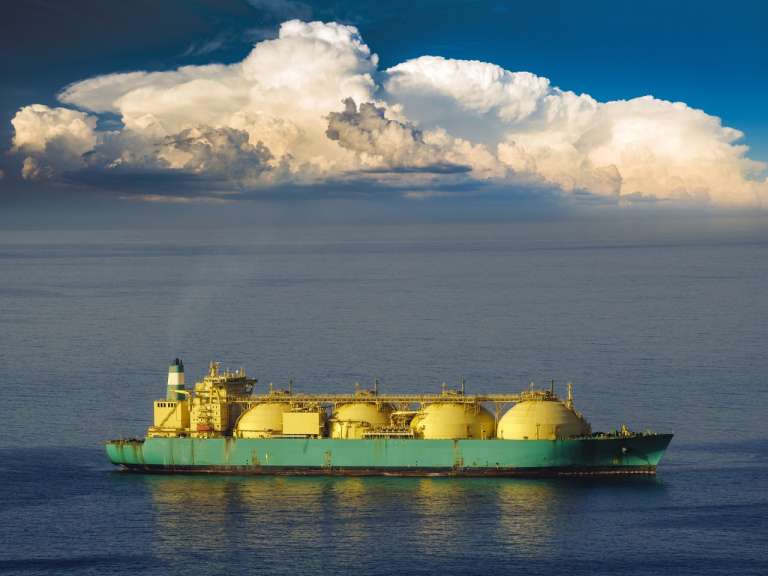How Will the LNG Trade Evolve in 2018 and Beyond?
Peter Kelly-DetwilerThe global LNG trade is picking up steam in 2018, changing the nature of power systems around the world. Asia is a big buyer, and the US is emerging as a big seller.

The global LNG trade is evolving rapidly, as new supply-and-demand dynamics take shape. Among the major recent developments is the emergence of the United States as an LNG exporter.
According to the 2017 World LNG Report by the International Gas Union (IGU), Qatar and Australia own the lion's share of the LNG trade, exporting 77.2 and 44.3 metric tons per annum (MTPA), respectively, and representing 30 percent and 17 percent of global LNG exports, respectively.
By contrast, the US exported only 2.9 MTPA (roughly 1 percent of global LNG exports). However, the US is just getting started, with close to 58 MTPA of new export capacity under construction.
BP forecasts that the LNG trade will grow much faster than traditional gas pipeline trading, and expects it to increase from about 32 percent of globally traded gas this year to roughly 50 percent by 2035. Asia is already the largest destination for LNG, led by China and followed by India. Demand for gas is expected to grow faster than oil or coal in this region.
Europe will grow more slowly, as demand for gas has softened. Natural gas is expected to gain modestly in the overall global fuel mix, from 22 percent in 2016 to 23 percent by 2030, driven mostly by demand in Southeast Asia and other Asian countries.
Today, most LNG cargoes are delivered on one of 439 LNG tankers to various nations under fixed contracts, according to the IGU report, but signs are that this is changing. Over the longer term, increasing liquidity is expected to result in global trade integration, with long-term contracts indexed to spot prices. Reuters reports that already, various regions are seeing a shift in this direction, coupled with a move toward shorter fixed contracts.
The experience of the first US LNG exporter, Cheniere, illustrates this new dynamic. According to Reuters, between February of 2017 and May of 2017, the company had already delivered shipments to 20 different countries.
What does the significant growth in LNG exports signal for the future composition of energy and power systems? There are multiple dynamics at play, and each electricity grid is different. Although their impacts have varied, it's instructive to look at several regions in which these dynamics are playing out to evaluate shifts in the future generation mix.
Since it's by far the largest buyer of power, China is worth examining first. According to the Financial Times, China was the third-largest LNG buyer in 2017, but has been buying mostly on spot markets. China signed its first long-term contract for US LNG with the exporter Cheniere in February 2018.
As China's demand for power grows, the US Energy Information Administration (EIA) expects coal's share of the pie to decline from 72 percent of the generation mix in 2015 to 47 percent by 2040. The share owned by gas will grow, but will be eclipsed largely by the growth of nuclear energy and wind power.
In Japan, another major player in the global trade, LNG is already a critical part of the generation mix. Japan is by far the largest LNG importer, representing almost a third of total global imports in 2016, according to the IGU report. This is largely to compensate for the closure of nuclear plants after the Fukushima disaster. Longer term, the country is still considering new coal generation, according to ABC, as it's less expensive than gas-fired generation.
India, the fourth-largest importer of LNG, has huge plans for the fuel. The country plans to add seven new LNG import terminals (in addition to its existing four) by 2025 and more than triple LNG deliveries. As far as the generation mix, much of the new LNG will be devoted to electrifying households that currently do not have power, while also reducing reliance on coal.
For its part, Europe has actually seen natural gas demand decline in recent years, according to Bloomberg, faster than demand for its counterpart coal, with half of the lost volumes coming from the power sector. It's therefore not nearly as critical a player as the Asian countries or the US.
What about the effect on the US? The long-term impact on US electricity prices is far from clear. According to The ScottMadden Energy Industry Update, the current roster of LNG projects will result in exports of 10 billion cubic feet (BCF) per day by 2020, compared with current daily domestic consumption of approximately 69 BCF, equal to approximately 14 percent of total consumption.
The ultimate impact on domestic gas prices is uncertain, but it is indisputable that significant upward pressure is possible within the decade as export capabilities are built out. Since gas is generally responsible for setting the marginal price in wholesale systems, this would result in upward electricity price pressures. This is potentially good news for the rest of the generation fleet that has had a difficult time in recent years, facing witheringly low gas prices and cheap renewables. This is perhaps not such happy news for the end user, who may end up paying somewhat more for the future power bill.
One thing is for sure: The global LNG trade is set to pick up steam—and the US is poised to become a significant disrupter.
The rise of renewables, the retirements of coal and nuclear plants, advances in gas turbine technology, increased competition across fuel sources, and emissions legislation are changing market dynamics across the globe.
New technologies are establishing the future of wind machines in locations that are currently unable to harness wind power.
Coal plant owners do have profitable retirement options. These coal plant asset optimization strategies involve careful planning, but can yield big ROIs.